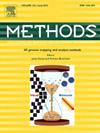An NGS-based approach for precise and footprint-free CRISPR-based gene editing in human stem cells
IF 4.3
3区 生物学
Q1 BIOCHEMICAL RESEARCH METHODS
引用次数: 0
Abstract
Precise gene editing with conventional CRISPR/Cas9 is often constrained by low knock-in (KI) efficiencies (≈ 2–20 %) in human induced pluripotent stem cells (hiPSCs) and human embryonic stem cells (hESCs). This limitation typically necessitates labour-intensive manual isolation and genotyping of hundreds of colonies to identify correctly edited cells. Fluorescence- or antibiotic-based enrichment methods facilitate the identification process but can compromise cell viability and genomic integrity. Here, we present a footprint-free editing strategy that combines low-density seeding with next-generation sequencing (NGS) to rapidly identify cell populations containing precisely modified clones. By optimising the transfection workflow and adhering to CRISPR/Cas9 KI design principles, we achieved high average editing efficiencies of 64 % in hiPSCs (introducing a Brugada syndrome-associated variant) and 51 % in hESCs (introducing a neurodevelopmental disorder (NDD)-associated variant). Furthermore, under suboptimal CRISPR design conditions, this approach successfully identified hESC clones carrying a second NDD-associated variant, despite average KI efficiencies below 1 %. Importantly, genomic integrity was preserved throughout subcloning rounds, as confirmed by Sanger sequencing and single nucleotide polymorphism (SNP) array analysis. Hence, this NGS-based enrichment strategy reliably identifies desired KI clones under both optimal and challenging conditions, reducing the need for extensive colony screening and offering an effective alternative to fluorescence- and antibiotic-based selection methods.
一种基于ngs的方法,用于人类干细胞中基于crispr的精确和无足迹基因编辑
在人类诱导多能干细胞(hiPSCs)和人类胚胎干细胞(hESCs)中,使用传统的CRISPR/Cas9进行精确的基因编辑通常受到低敲入(KI)效率(≈2 - 20%)的限制。这种限制通常需要耗费大量劳动的人工分离和数百个菌落的基因分型,以鉴定正确编辑的细胞。荧光或基于抗生素的富集方法促进了鉴定过程,但可能损害细胞活力和基因组完整性。在这里,我们提出了一种无足迹编辑策略,将低密度播种与下一代测序(NGS)相结合,以快速识别含有精确修饰克隆的细胞群体。通过优化转染工作流程并坚持CRISPR/Cas9 KI设计原则,我们在hiPSCs(引入Brugada综合征相关变体)和hESCs(引入神经发育障碍(NDD)相关变体)中实现了64%的高平均编辑效率。此外,在次优CRISPR设计条件下,尽管平均KI效率低于1%,但该方法成功鉴定了携带第二种ndd相关变体的hESC克隆。重要的是,通过Sanger测序和单核苷酸多态性(SNP)阵列分析,整个亚克隆过程中都保持了基因组的完整性。因此,这种基于ngs的富集策略在最佳和具有挑战性的条件下都能可靠地识别所需的KI克隆,减少了广泛的菌落筛选的需要,并提供了一种有效的替代基于荧光和抗生素的选择方法。
本文章由计算机程序翻译,如有差异,请以英文原文为准。
求助全文
约1分钟内获得全文
求助全文
来源期刊

Methods
生物-生化研究方法
CiteScore
9.80
自引率
2.10%
发文量
222
审稿时长
11.3 weeks
期刊介绍:
Methods focuses on rapidly developing techniques in the experimental biological and medical sciences.
Each topical issue, organized by a guest editor who is an expert in the area covered, consists solely of invited quality articles by specialist authors, many of them reviews. Issues are devoted to specific technical approaches with emphasis on clear detailed descriptions of protocols that allow them to be reproduced easily. The background information provided enables researchers to understand the principles underlying the methods; other helpful sections include comparisons of alternative methods giving the advantages and disadvantages of particular methods, guidance on avoiding potential pitfalls, and suggestions for troubleshooting.
 求助内容:
求助内容: 应助结果提醒方式:
应助结果提醒方式:


